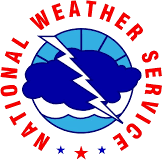
Submitted by Dale Durham (W5WI)
Many of us have portable emergency generators that we bought for use
during electric outages. After we use them, we store them away until we
need them again. Many of us just put them away in the back of the garage or
into a storage shed without giving it any thought. Here are some tips on
how to store them properly:
– If there is still gas in the tank, either drain the gas or add some fuel
stabilizer, such as STA-BIL. This will keep the gasoline from deteriorating
and usually will make it last for 18 to 24 months.
– Run the generator with the fuel stabilizer, then shut off the fuel
supply valve until the generator stops. This will make sure that no gas
remains in the carburetor or fuel line. Change the oil using the
manufacturer’s recommended oil viscosity. The recommendation is usually SAE
HD30 for warmer months, or 10W-30 for colder months.
– Clean the generator with a clean cloth, and cover it with a plastic
cover or a tarp.
– If you store any gasoline in an approved storage gas can, make sure you
add STA-BIL to it. Better yet, pour the leftover gas into your automobile
gas tank. Buy some extra oil and a small funnel so that you can add oil
next time you run the generator. It is sometimes hard to get the correct
oil in the middle of an emergency, and small engines will burn oil on
extended run, causing the low oil shutdown to engage.
– Buy an extra spark plug for the generator.
– Store your electrical extension cords and adapters with the generator so
they will be right there when you need them.
– If the generator gave you any problems during the last run, take it to
an authorized repair facility to have it looked at. The next emergency is
not the time to be playing junior repairman with the generator.
– Keep a tag on the generator noting when it was last used and serviced,
along with the age of the stabilized gasoline in the tank. Better yet, keep
the gas tank empty.
– Read the generator manufacturer’s instruction manual and keep a copy
handy for reference!
— Thanks to the Great South Bay Amateur Radio Club’s newsletter, The
Compass



 KCARC meets the 2nd Monday of the month [except December] at 7:00 pm.
KCARC meets the 2nd Monday of the month [except December] at 7:00 pm.